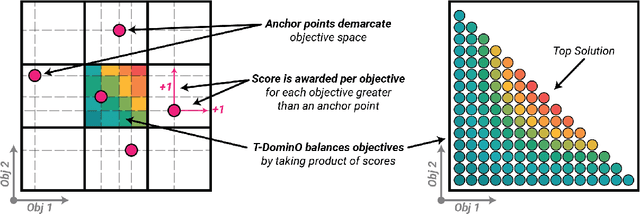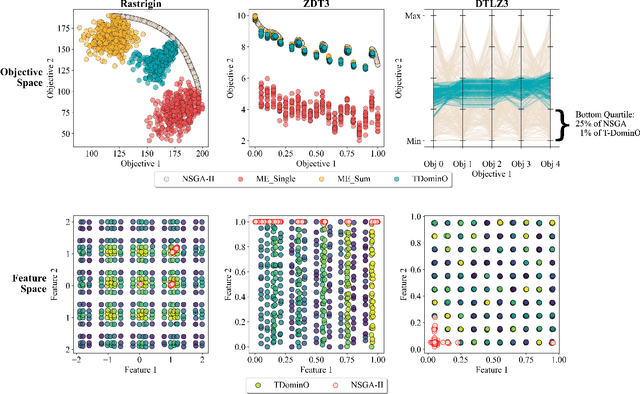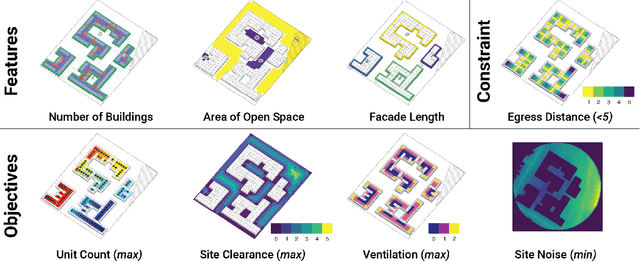James Stoddart
Generative Design through Quality-Diversity Data Synthesis and Language Models
May 16, 2024Abstract:Two fundamental challenges face generative models in engineering applications: the acquisition of high-performing, diverse datasets, and the adherence to precise constraints in generated designs. We propose a novel approach combining optimization, constraint satisfaction, and language models to tackle these challenges in architectural design. Our method uses Quality-Diversity (QD) to generate a diverse, high-performing dataset. We then fine-tune a language model with this dataset to generate high-level designs. These designs are then refined into detailed, constraint-compliant layouts using the Wave Function Collapse algorithm. Our system demonstrates reliable adherence to textual guidance, enabling the generation of layouts with targeted architectural and performance features. Crucially, our results indicate that data synthesized through the evolutionary search of QD not only improves overall model performance but is essential for the model's ability to closely adhere to textual guidance. This improvement underscores the pivotal role evolutionary computation can play in creating the datasets key to training generative models for design. Web article at https://tilegpt.github.io
T-DominO: Exploring Multiple Criteria with Quality-Diversity and the Tournament Dominance Objective
Jul 04, 2022



Abstract:Real-world design problems are a messy combination of constraints, objectives, and features. Exploring these problem spaces can be defined as a Multi-Criteria Exploration (MCX) problem, whose goals are to produce a set of diverse solutions with high performance across many objectives, while avoiding low performance across any objectives. Quality-Diversity algorithms produce the needed design variation, but typically consider only a single objective. We present a new ranking, T-DominO, specifically designed to handle multiple objectives in MCX problems. T-DominO ranks individuals relative to other solutions in the archive, favoring individuals with balanced performance over those which excel at a few objectives at the cost of the others. Keeping only a single balanced solution in each MAP-Elites bin maintains the visual accessibility of the archive -- a strong asset for design exploration. We illustrate our approach on a set of easily understood benchmarks, and showcase its potential in a many-objective real-world architecture case study.
 Add to Chrome
Add to Chrome Add to Firefox
Add to Firefox Add to Edge
Add to Edge